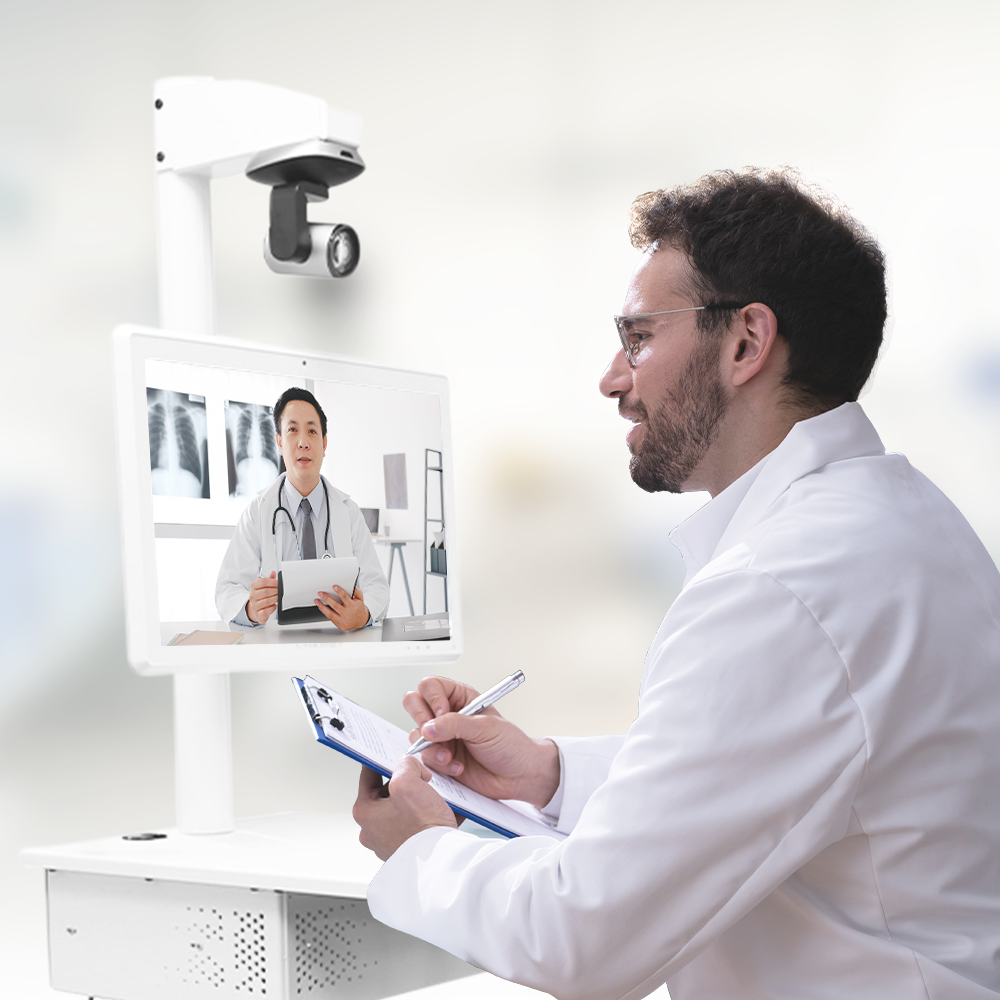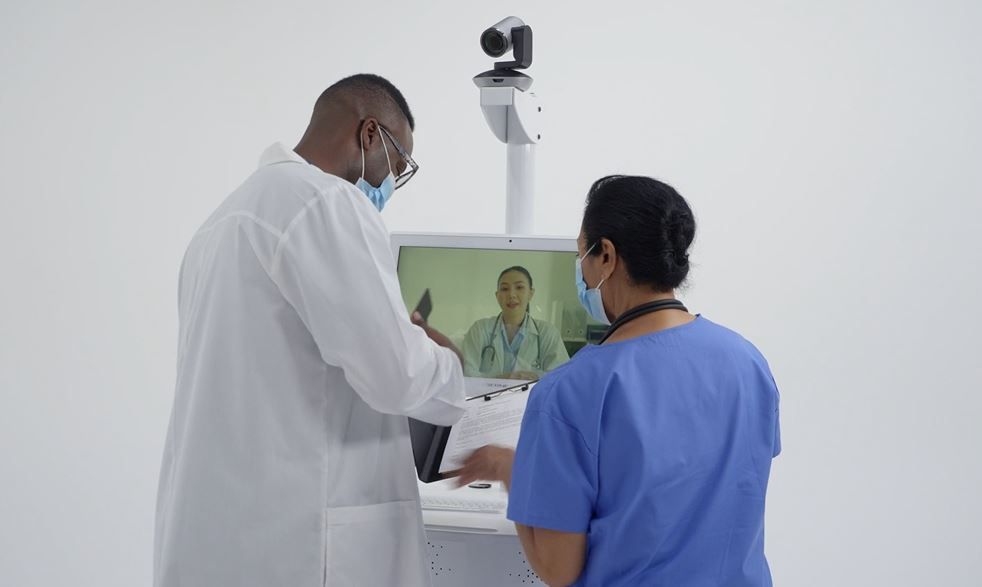By First Products on 7/6/24 8:00 AM
In the years since 2020, hospitals and healthcare facilities have faced unprecedented staffing shortages. The healthcare industry is grappling with a perfect storm of factors, including an aging population, increased demand for services, and a shrinking workforce.
However, technology is paving the way for more efficient (and cost-effective) patient care and optimized staff utilization.
Let's explore how cutting-edge medical carts and telehealth solutions are revolutionizing healthcare delivery in the face of these challenges:
The Growing Challenge of Hospital Staffing Shortages
Hospital staffing shortages have become a pressing concern across the globe. Nurses, doctors, and other healthcare professionals are stretched thin, often leading to burnout and compromised patient care. The COVID-19 pandemic aggravated this issue, highlighting the urgent need for solutions that can help healthcare facilities do more with limited human resources.
Leveraging Technology to Bridge the Gap
Fortunately, advancements in medical technology are offering promising solutions to alleviate the strain on healthcare staff.
One area where technology is making a significant impact is through the use of medical carts designed specifically for telehealth systems. As a manufacturer of these carts, First Products can attest to this firsthand:
Telemedicine Carts: Bringing Expertise to the Bedside

Telemedicine carts, like the Mov-it Telemedicine Cart, are optimizing patient care by enabling remote consultations and examinations. These advanced carts come equipped with high-definition cameras, speakers, and screens that allow specialists to interact with patients and local healthcare providers in real-time, regardless of their physical location.
Take surgery for example. Doctors use these mobile carts to perform remote, robot-assisted surgery.
While viewing the patient with cameras mounted in precise positions, the cart allows the surgeon to remote-control the robotic arms and perform the procedure with remarkable accuracy.
Key benefits of telemedicine carts include:
- Expanded Access to Specialists: Patients in rural or underserved areas can now receive expert care without the need for travel.
- Efficient Use of Staff Resources: Specialists can consult on multiple cases across different locations, maximizing their impact.
- Reduced Risk of Infection: By minimizing unnecessary physical contact, these carts help protect both patients and healthcare workers.

Telesitting Carts: Enhancing Patient Monitoring
Another solution addressing staffing shortages is the FIRST TeleView Telesitting Cart. These carts have 2-way audio-video cameras to provide continuous remote monitoring of patients who require close observation, such as those at risk of falls or with cognitive impairments.
For example, a nurse overseeing 12-20 patients can monitor all of them at once, from one place, without walking between rooms. It lets them communicate with nurses outside the room, also from the same place.

Telesitting carts offer several advantages:
- 24/7 Monitoring: A single staff member can monitor multiple patients simultaneously, increasing efficiency.
- Immediate Response: The two-way communication system allows staff to intervene quickly if needed.
- Cost-Effective: Reduces the need for one-on-one patient sitters, allowing staff to be allocated to other critical tasks.
Implementing Telehealth Solutions in Hospitals
To effectively address staffing shortages, the hospitals we supply are increasingly turning to telehealth technology. As the examples above show, installing technology is one of the most cost-effective options for understaffed facilities.
Telehealth solutions encompass a range of products and services designed to achieve more (and better) patient care with the same core staff resources -- in the same time and with the same effort.
Key components of an effective telehealth strategy include:
- Versatile Telemedicine Carts: Carts that can be easily moved between patient rooms and departments.
- High-Quality Audio-Visual Equipment: Ensures clear communication between patients and remote healthcare providers.
- Secure Data Transmission: Protects patient privacy and complies with healthcare regulations.
- User-Friendly Interfaces: Allows for easy operation by both staff and patients. First's OEM program, the most specialized in the industry, takes this a step further and customizes your carts to exact facility demands.

The Future of Healthcare: A Hybrid Approach
As we look to the future, it's clear that the solution to staffing shortages lies in a hybrid approach -- one that combines the irreplaceable human touch of healthcare professionals with the efficiency and reach of technology.

By integrating telemedicine and telesitting carts into their operations, hospitals can:
- Extend the reach of their existing staff
- Provide high-quality care to more patients
- Reduce burnout by managing workloads
- Attract tech-savvy professionals to the field
Conclusion
While hospital staffing shortages are a significant challenge, installing technology offers an effective and cost-effective path forward.
By embracing solutions like telemedicine and telesitting carts, healthcare facilities can enhance patient care, support their staff, and build a more resilient healthcare system for the future.
As we continue to navigate the complexities of modern healthcare, it's clear that the integration of technology will play a critical role in addressing staffing shortages and improving patient outcomes. The future of healthcare is here, and it's powered by innovation.
First Products specializes in delivering a perfect fit solution for your healthcare facility. Ready to uplevel your staff's productivity? Browse our selection and request a quote:
_11wX8.5h-FINAL.png?width=721&name=FP-Logo-Horizontal-(COLOR)_11wX8.5h-FINAL.png)

comments